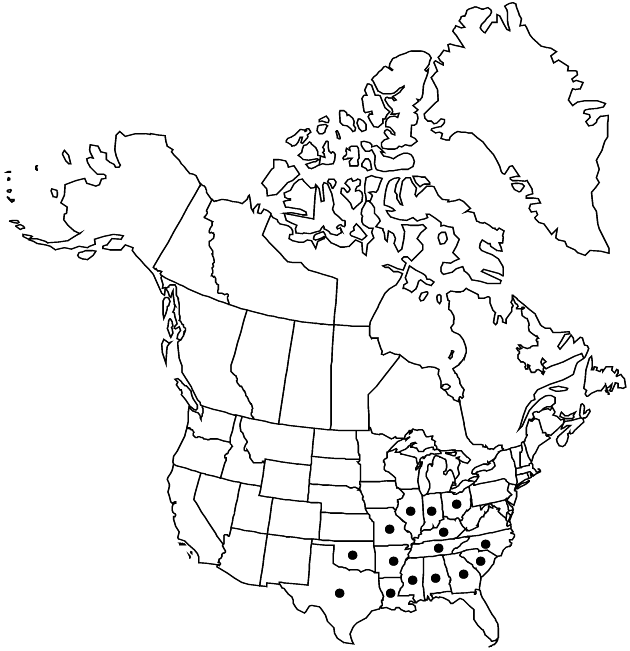Cirsium carolinianum
Rhodora 50: 229. 1948.
Biennials, 50–180 cm; taproots short with many slender, fibrous lateral roots. Stems usually single, erect, glabrous to ± tomentose, sometimes sparsely villous with septate trichomes; branches few, usually distal, ascending. Leaves: blades linear to oblanceolate or elliptic, 10–30 × 1–5 cm, unlobed and spinulose to irregularly dentate or pinnatifid, lobes narrowly to broadly triangular, sometimes coarsely toothed or lobed toward base, acuminate, main spines slender, 1–5 mm, abaxial faces gray-tomentose, adaxial glabrous or sparsely villous with septate trichomes; basal often present at flowering, petioles slender, winged, bases long-tapered; principal cauline relatively few (10–25), petiolate or distal sessile, mostly restricted to proximal 1/2 of stems, progressively reduced distally, bases tapered, not decurrent; distal cauline widely separated, linear to narrowly elliptic, reduced, becoming ± bractlike, merely spinulose to irregularly dentate or shallowly lobed. Heads (1–)2–9(–many), in paniculiform arrays. Peduncles slender, 1–15 cm (not overtopped by distal leaves). Involucres narrowly ovoid to campanulate, 1.2–2 × 1.2–2 cm, thinly arachnoid-ciliate. Phyllaries in 7–10 series, imbricate, green, linear to lanceolate (outer) or linear to linear-lanceolate (inner), abaxial faces with narrow, glutinous ridge; outer and middle ascending to appressed, bodies entire, apices widely spreading (at least the outer), spines ascending to spreading (at least the outer), slender, 1–4 mm; apices of inner phyllaries flat, often twisted, acuminate. Corollas pink-purple (white), 15–20 mm, tubes 5–9 mm, throats 5–7 mm (noticeably wider than tubes), lobes 4–5 mm; style tips 4 mm. Cypselae light brown, 3–4 mm, apical collars yellowish, 0.5–1 mm; pappi 12–14 mm. 2n = 20, 22.
Phenology: Flowering spring–summer (Apr–Jul).
Habitat: Wooded areas, openings, fields, roadsides
Elevation: 50–300 m
Distribution

Ala., Ark., Ga., Ill., Ind., Ky., La., Miss., Mo., N.C., Ohio, Okla., S.C., Tenn., Tex.
Discussion
Cirsium carolinianum is widely distributed in the southeastern United States: on the Gulf coastal plain from Texas to Alabama north through the Ouachita and Ozark highlands to southeastern Missouri; in the Ohio River Valley from southernmost Illinois to southern Ohio and northern Kentucky; and in the southern Appalachians and Piedmont from Alabama and Tennessee to southern Virginia. Cirsium carolinianum, though widespread, is a taxon of conservation concern over part of its range. The replacement of open woods by dense forests brought about by fire suppression has greatly reduced available habitat.
Selected References
None.